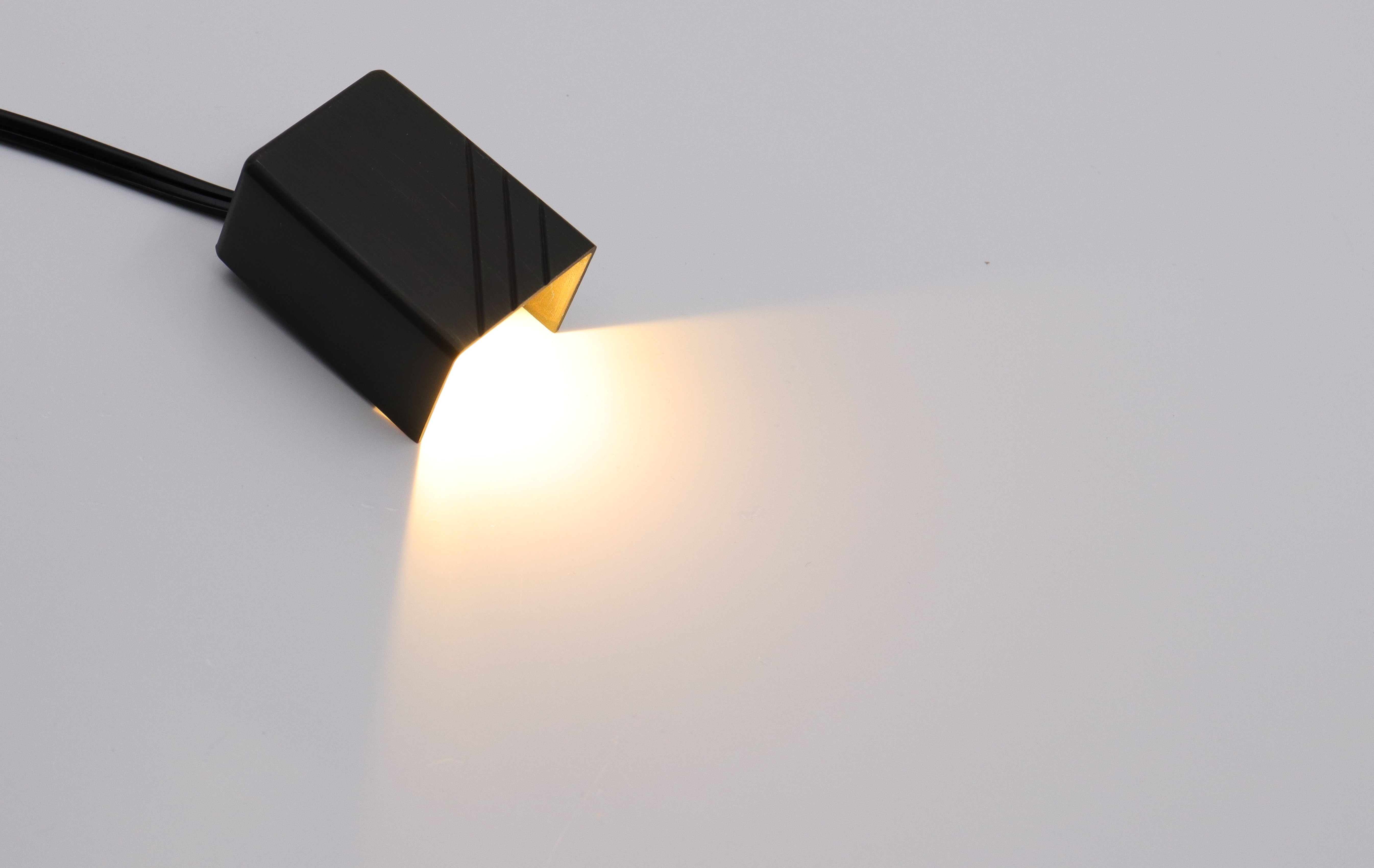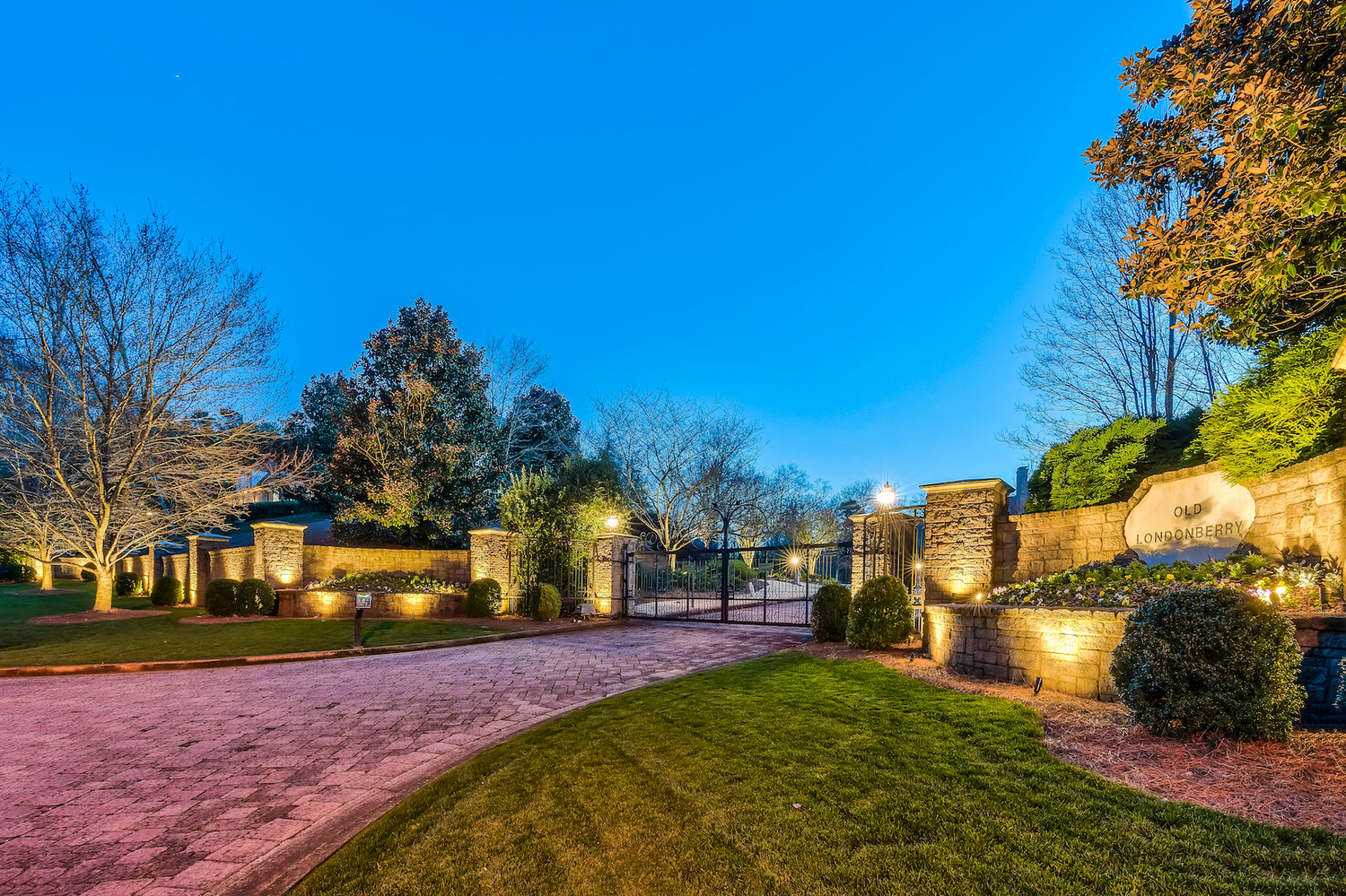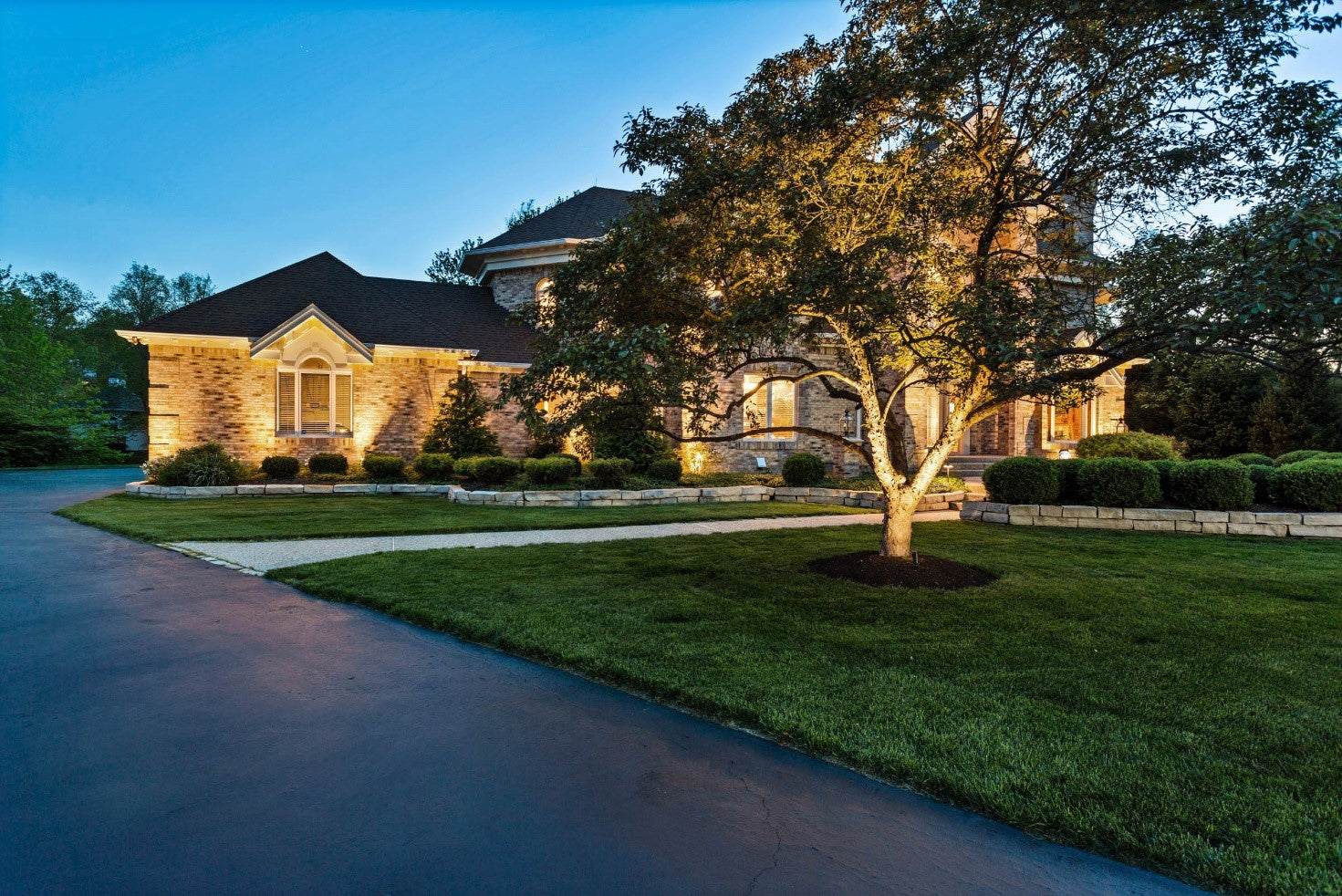|
Feature in Comparison |
Spotlights |
Floodlights |
|
Light Distribution |
Concentrated beam, typically under 45° |
Broad, sweeping light, generally exceeding 45° |
|
Beam Angle |
Narrow, focuses directly on specific targets |
Wide, covers large spaces comprehensively |
|
Intensity and Range |
High intensity, illuminates objects from a distance |
Gentler illumination, covers a wider area |
|
Color Temperature |
Warmer tones (2700K to 3000K), cozy atmosphere |
Cooler tones (3500K to 5000K), clearer visibility |
In landscape lighting, making the right choice between spotlights and floodlights is crucial for achieving the desired ambiance and functionality. These two types of lighting serve different purposes and can dramatically alter the appearance and feel of outdoor spaces.
We are writing to throw light on the specifics of landscape spotlights and floodlights, highlighting their distinct characteristics, and offering insights on selecting the appropriate type for various settings.
What Are Landscape Spotlights?
Landscape spotlights are designed to emit a narrow beam of light, typically not wider than 45 degrees. This focused light is perfect for highlighting specific features in the landscape such as trees, sculptures, or architectural details. Spotlights are versatile in their application, allowing for precise control over the lighting effect, which emphasizes the textures and colors of the illuminated objects. They are often used to create a dramatic and attention-grabbing effect in the garden or yard.

What Are Landscape Flood Lights?
Contrary to spotlights, landscape floodlights cast a much broader beam of light, usually exceeding 45 degrees. This wide beam is ideal for illuminating large areas such as driveways, lawns, and expansive outdoor living spaces. Floodlights provide general lighting, enhancing visibility and safety while softening the outdoor environment's overall look. They are less about highlighting specific features and more about ensuring a uniformly lit space.

What Are the Differences Between Spot Lights and Flood Lights?
a.Light Distribution
Spotlights are engineered to emit a concentrated beam of light, typically under a 45-degree angle, focusing intensely on singular elements within a landscape. This precise light distribution is particularly beneficial for accentuating distinct points such as garden statues, water features, or specific architectural details, thereby adding depth and texture to the outdoor environment.
In contrast, floodlights are designed to illuminate vast spaces with a broad, sweeping light distribution, generally exceeding a 45-degree angle. This wide-ranging light spread provides a uniform, ambient glow over large areas, making it ideal for enhancing general visibility across expansive outdoor settings like backyards, commercial landscapes, or parking areas. The diffuse nature of floodlighting ensures that spaces are bathed in light, reducing shadows and dark spots, thus contributing to overall safety and navigability.
To ensure your featured elements truly stand out, choosing the best spotlights for your home is crucial, enabling precise and dramatic illumination.
b.Beam Angle
Spotlights, with their narrow beam, focus light directly onto specific targets, creating a spotlight effect that draws the eye to particular features or areas. This targeted lighting is perfect for showcasing the intricate details of a landscape's design, enhancing the visual appeal of individual elements.
On the other hand, floodlights cast a wider beam, often exceeding 120 degrees, to illuminate large spaces comprehensively. This extensive beam spread makes floodlights an excellent choice for general area lighting, as they can cover vast sections of space with fewer fixtures compared to spotlights. The broader beam angle of floodlights ensures a softer, more diffused light, ideal for creating safe and welcoming environments.
For detailed guidance on spotlight beam angles and how they can accentuate your outdoor space, our spotlights guide for the home exterior offers expert insights.
c.Intensity and Range
Spotlights are characteristically more intense than floodlights due to their concentrated beams, which allows them to illuminate objects from a greater distance effectively. This intensity is crucial for drawing attention to specific landscape features, enabling them to stand out against the backdrop of the night. The focused nature of spotlighting can highlight the textures and colors of targeted objects, enhancing the overall aesthetic appeal of the area.
Conversely, floodlights offer a gentler illumination over a wider area but with less intensity compared to spotlights. This characteristic makes them less suitable for detailed accentuation but perfect for providing ambient lighting. The extensive coverage of floodlights contributes to creating a sense of openness and security, making them ideal for public and residential outdoor spaces where broad visibility is essential.
d.Color Temperature
Spotlights often come in warmer color temperatures, which range from 2700K to 3000K. These warmer tones are ideal for creating a cozy and inviting atmosphere, emphasizing the natural hues and textures of the landscape. The warm light is particularly flattering to organic materials like wood and foliage, enhancing the natural beauty of garden features.
In contrast, floodlights may feature cooler color temperatures, typically between 3500K to 5000K. These cooler tones are better suited for general area lighting as they provide clearer visibility and a more neutral light. The cooler color temperatures contribute to a sense of alertness and can make large areas feel more secure and well-lit, which is essential for outdoor spaces used during the evening hours.
Read more here:Best Color Temperature for your landscape lighting
Spot Lights vs. Flood Lights: How to Choose
When deciding between spotlights and floodlights for your landscape lighting, it's essential to consider several key factors:
a.Purpose
If your objective is to highlight specific elements within your landscape, such as architectural details, garden statues, or trees, then spotlights are your best bet. Their focused beam is designed to illuminate and enhance these features, making them stand out against the darker backdrop of the night.
Or, if your goal is to light up broad areas for safety reasons, to deter potential intruders, or to provide general illumination for walking paths, driveways, or open lawns, floodlights are more appropriate. Their wide beam angle covers large spaces with uniform light, reducing shadows and dark areas where hazards could hide.
b.Area Size
Floodlights, with their broader light distribution, are naturally suited for large, expansive areas. They can bathe a wide expanse in light, making them ideal for open landscapes, large backyards, or commercial properties.
On the other hand, spotlights, with their narrow beams, are better suited for smaller, more defined areas where specific features or sections require emphasis. They allow for targeted lighting that can create depth and interest in your landscape without overwhelming small spaces with excessive light.
c.Aesthetics
Spotlights can be used to create a dramatic and dynamic landscape by focusing intense beams of light on particular points of interest. This type of lighting can add drama and intrigue to your outdoor space, making it feel like a stage set for your personal enjoyment.
Floodlights, in contrast, offer a more subdued and uniform lighting solution. They are excellent for creating a safe, inviting, and tranquil environment. The diffuse, even light produced by floodlights can help to soften the landscape, reducing harsh shadows and creating a gentle, welcoming atmosphere.
Understanding the aesthetics and functionality spotlights bring can transform your outdoor area. Learn more about selecting the perfect spotlights to enhance your home's nighttime charm.
When to Use Spot Lights and Flood Lights Used Together?
Combining spotlights and floodlights in a landscape lighting design allows for a layered approach, enhancing both functionality and aesthetics:
- Accent and Ambiance: Spotlights can be used to accentuate key features such as trees, sculptures, or architectural elements, drawing attention to these details. Meanwhile, floodlights can provide ambient lighting to larger areas, creating a welcoming and safe environment. This combination ensures that while specific features are highlighted, the overall space remains inviting and well-lit.
- Depth and Dimension: Using both lighting types adds depth and dimension to the outdoor space. Spotlights create focal points and shadows that give the landscape a three-dimensional feel. Floodlights, by illuminating broader areas, ensure that the background is visible and complements these focal points, adding to the overall depth of the scene.
- Safety and Aesthetics: Strategically placed spotlights can guide visitors along pathways or toward entrances, while floodlights can illuminate larger areas such as driveways or patios, enhancing safety. The aesthetic appeal of the landscape is maintained through the careful placement of spotlights to highlight the garden's best features.
And When to Use Spot Lights and Flood Lights Separately?
While combining spotlights and floodlights is common, there are situations where they might be used separately:
- Small Gardens or Focused Areas: In smaller gardens or areas where lighting is intended only to highlight specific features or create intimate settings, spotlights alone may suffice. In these cases, the concentrated light from spotlights can provide all necessary illumination without the need for broad lighting.
- Large, Open Spaces: Conversely, in very large open areas where general illumination is the primary concern, such as a large backyard without many focal points, floodlights may be used on their own to provide even, widespread lighting.
- Security Purposes: In scenarios where the main goal is security, floodlights may be employed independently to cover large areas with bright light, deterring unwanted visitors and enhancing nighttime visibility.
In short, choosing between spotlights and floodlights for landscape lighting depends on the specific needs of your space. Spotlights highlight individual features, offering precision and drama, while floodlights provide broad, general lighting for larger areas. Selecting the right type or combining both can enhance the beauty, safety, and functionality of your outdoor environment.






Leave a comment
All comments are moderated before being published.
This site is protected by hCaptcha and the hCaptcha Privacy Policy and Terms of Service apply.